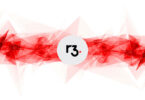Yesterday The Institutes Riskstream Collaborative unveiled the third iteration of its blockchain platform Canopy. The previous version of Canopy supported the R3 Corda enterprise blockchain. By transitioning to the Kaleido platform, the insurance blockchain consortium retains Corda and adds support for multiple flavors of Enterprise Ethereum, including Quorum and Hyperledger Besu. While not a current offering, Kaleido’s GitHub code repository also shows activity on Hyperledger Fabric.
But the biggest benefit of Canopy 3.0 is the hoped for ability to move faster, which is especially important given the acceleration of digital transformation driven by COVID-19.
The need for speed
RiskStream unveiled its initial policy blockchain that used Ethereum in December 2017 before switching to Corda. However, its first use case, the First Notice of Loss (FNOL) for auto accidents, is not yet live with current plans to go into shadow production in Q3 of this year.
Riskstream’s VP Patrick Schmid told Ledger Insights that with Kaleido’s development help, it took just three weeks to create a proof of concept for its Mortality Monitor use case that aims to speed up payouts on life insurance policies.
Kaleido offers both an enterprise Blockchain as a Service solution with multiple cloud providers, as well as a series of blockchain software building blocks as part of its SaaS solution.
“When we went through this journey (in 2018), there wasn’t a Kaleido,” said Schmid talking about Canopy 2.0. “We were building something awfully similar to what we have with Canopy 3.0, but from scratch.”
The sentiment was echoed by Kaleido COO Sophia Lopez talking about consortia. “These projects are reinventing pieces that are already out there. Some of them we’d already open sourced.” She also noted that consulting “helps get these consortia off on the right track and using the right set of building blocks for their use case.”
None of these blockchain initiatives use blockchain in isolation. In reality, they are enterprise solutions with the assortment of moving parts that comes with that. “These really large scale industry transformative plays are complex, and the technology gets complex,” said Kaleido CEO Steve Cerveny. “A Riskstream sort of project is going to have 40 components that they need to bring. And we think of the blockchain as the beating heart of that.”
The Kaleido team has a decent track record of helping enterprise blockchain networks to launch quickly with a minimum viable product. For example, agribusiness consortium Covantis announced its technology selection in January 2020 and is already in production. And Kaleido boasts several high-profile clients such as ING, Citibank, Shell and Sony. So far, many of its publicized projects are based on Ethereum. That’s because of its roots as a spin-out from ConsenSys, the Ethereum development house. Kaleido unveiled its Corda offering ten months ago.
The Canopy 3.0 evolution also matches non-profit RiskStream’s funding model, which is increasingly dependent on support from members on a per use case basis, compared to the tens of millions raised by the likes of B3i.
“Certainly, finance is an element here. Our membership has been very specific about asking us as the Riskstream Collaborative about being as efficient as possible,” said Schmid.
Opening the umbrella
Apart from speed, Kaleido’s SaaS platform brings security certifications such as SOC2 Type 2 and ISO compliance.
While security is critical, first you need participation. And Canopy 3.0 lowers the barriers to entry so startups can participate with the ecosystem more cost-effectively. Plus, by broadening the technology support beyond Corda, other existing insurance blockchain solutions can also participate in the Collaborative.
“Some DLT platforms are very good for peer-to-peer information exchange,” said Schmid referring to the different blockchain protocols. “Others are more registry use cases that require a more decentralized blockchain approach. There’s pros and cons to everything. We want our members to choose what’s the correct platform and not dictate it to them.”
If some use cases are using Corda and others Ethereum, that begs the question, what about interoperability between them? The frank answer is not yet. Interoperability between different technologies is possible now invariably with compromises. Talking about native blockchain interoperability, Schmid said, “That’s a vision that we’re all anticipating is coming. We think this would provide us a good stepwise approach towards that longer term vision.”






